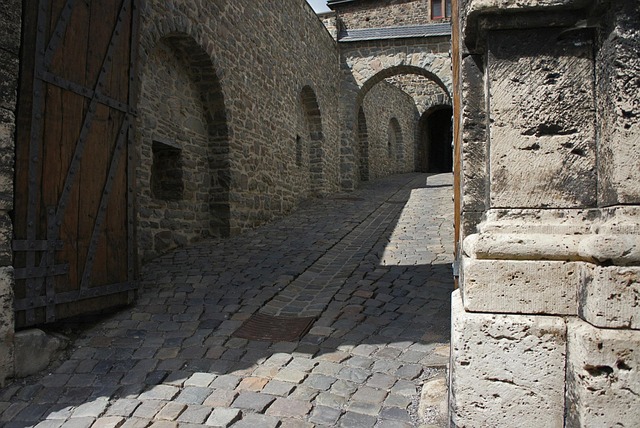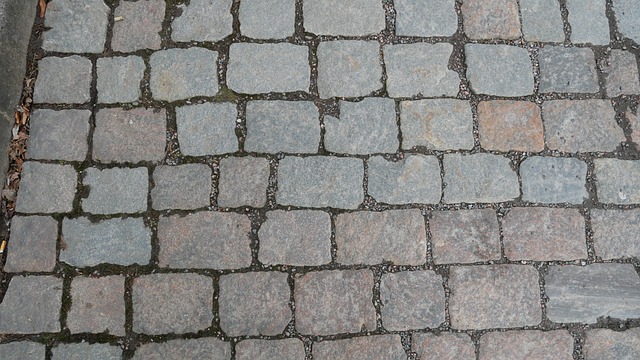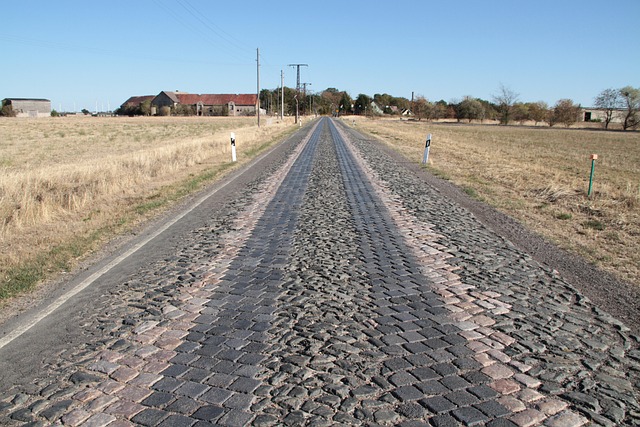Expert Asphalt Repairs: Albany HOA Paving Standards & Solutions

HOA paving Albany standards focus on high-quality asphalt and professional striping for safe, aesthetically pleasing roads. Specialists address common…….
Welcome to an in-depth exploration of a groundbreaking concept that is reshaping urban landscapes worldwide: HOA (Homeowners Association) paving in Albany. This article aims to unravel the intricacies of this innovative practice, its global impact, and the transformative potential it holds for cities. By delving into various facets, we will uncover how HOA paving Albany contributes to community development, economic growth, and sustainable urban planning. Prepare to embark on a journey that highlights real-world applications, challenges, and the future direction of this impactful initiative.
Definition: HOA paving refers to the collective effort by homeowners within a community or association to fund, organize, and implement road and pavement infrastructure projects. In Albany, a city known for its vibrant neighborhoods, this concept has taken root as a collaborative solution to improve local transportation networks.
Core Components:
Historical Context:
The concept of HOA paving has evolved over the past decade as cities face increasing pressure to address aging infrastructure and traffic congestion. Albany, with its diverse neighborhoods and thriving community spirit, embraced this initiative as a way to empower residents and foster a sense of ownership in their urban environment. Early projects focused on repairing and upgrading main thoroughfares, leading to improved safety and accessibility.
Significance:
HOA paving Albany is not merely about constructing roads; it represents a bottom-up approach to urban development. By involving homeowners, the community gains a direct say in shaping its surroundings, fostering pride and investment in local areas. This collaborative model has proven effective in enhancing neighborhood connectivity, promoting economic growth, and creating more vibrant, livable spaces.
International Influence:
The concept of HOA paving has transcended national boundaries, gaining traction worldwide. Cities from Australia to Europe have adopted similar initiatives, driven by shared challenges of infrastructure maintenance and community engagement. For instance, Melbourne’s neighborhood pavement programs have inspired similar efforts in Amsterdam, where local residents take pride in maintaining their streetscapes.
Key Global Trends:
Regional Variations:
The implementation of HOA paving varies across regions due to cultural, economic, and regulatory differences:
| Region | Unique Aspects | Challenges |
|—|—|—|
| North America | Strong community association culture, advanced digital tools for engagement | Strict building codes, varying permit processes across municipalities |
| Europe | Diverse cultural perspectives on community ownership, long-standing tradition of neighborhood initiatives | Language barriers, coordinating projects across multi-jurisdictional areas |
| Asia Pacific | Rapid urban growth, innovative financing mechanisms like crowdsourcing | Land rights and property ownership complexities, environmental regulations |
Market Dynamics:
The HOA paving market is driven by the cumulative efforts of countless individual projects. As more neighborhoods adopt this approach, it creates a network effect, encouraging suppliers to offer specialized services and materials at competitive prices. This dynamic fosters innovation and cost-effectiveness.
Investment Patterns:
Role in Economic Systems:
HOA paving Albany contributes to the local economy in several ways:
Digital Transformation:
Technology plays a pivotal role in modernizing HOA paving processes:
Impact on Implementation:
Technological innovations have streamlined HOA paving in several ways:
Future Potential:
The future of HOA paving Albany may include:
Key Policies and Frameworks:
Influence on Development:
Policies and regulations play a crucial role in shaping the success of HOA paving initiatives:
Common Hurdles:
Proposed Solutions:
Case Study 1: Elmwood Village, Albany
This vibrant neighborhood initiated a comprehensive pavement overhaul, transforming main streets into scenic boulevards. The project involved:
Outcomes:
Case Study 2: South End Renewal, Amsterdam
Amsterdam’s South End embraced HOA paving as part of a broader urban renewal strategy. Key achievements include:
Emerging Trends:
Strategic Considerations:
HOA paving Albany represents a powerful example of community-driven urban transformation. By empowering homeowners to take charge of their local infrastructure, this initiative fosters pride, investment, and a sense of collective responsibility. The global impact and diverse applications highlight its adaptability as a solution for cities worldwide.
As Albany continues to evolve, HOA paving will play a pivotal role in shaping its future, ensuring vibrant neighborhoods, improved connectivity, and sustainable urban development. By learning from successful case studies and addressing challenges head-on, cities can harness the potential of this innovative practice, ultimately enhancing the quality of life for residents.
Q: How do I get involved in HOA paving initiatives?
A: Start by reaching out to your local community association or neighborhood watch group. They often organize informational sessions and events where you can learn more and share your ideas.
Q: What if my neighborhood lacks the collective funds for pavement improvements?
A: Consider creative funding options like crowdfunding campaigns, grants from local foundations, or partnering with businesses interested in advertising on improved infrastructure.
Q: Can HOA paving projects truly make a difference in traffic congestion?
A: Absolutely! Well-designed and maintained roads can significantly improve traffic flow by providing clear routes, reducing accidents, and encouraging more efficient transportation choices.
Q: How do technology and digital platforms enhance HOA paving?
A: Digital tools streamline planning, engagement, and funding processes, enabling faster decision-making and 24/7 communication between residents and project managers.
Q: Are there environmental benefits to HOA paving?
A: Certainly! Using eco-friendly materials, designing for better drainage, and incorporating green infrastructure can reduce a neighborhood’s carbon footprint and contribute to Albany’s sustainability goals.

HOA paving Albany standards focus on high-quality asphalt and professional striping for safe, aesthetically pleasing roads. Specialists address common…….

Understanding HOA regulations for asphalt repairs in Albany is crucial for expert pavers. These rules guide material choices and maintenance practices…….

Understanding HOA paving requirements in Albany is crucial for maintaining commercial properties within strict guidelines set by Homeowners Associatio…….

HOA paving in Albany requires balancing aesthetics and functionality through various resurfacing options. Licensed pavers enhance curb appeal, ensure…….

Enhancing curb appeal through professional HOA paving Albany services transforms property entrances, adhering to local regulations and community aesth…….

HOA paving Albany requires professionals with experience adhering to quality and safety standards for uniform common areas. Top-rated contractors like…….

HOA paving Albany enhances curb appeal and safety through new driveways, walkways, and landscaping. Pairing these with outdoor lighting, architectural…….

HOA boards in Albany can enhance community spaces by focusing on specific paving needs like traffic flow and safety regulations. Professional paving s…….

HOA paving Albany transforms ordinary concrete into artistic masterpieces through expert techniques like etching, staining, and sealing. Local profess…….

HOA paving Albany offers cutting-edge solutions for community upgrades with eco-friendly materials like recycled rubber and plant-based oils. Advanced…….